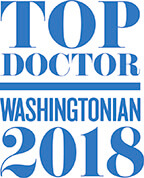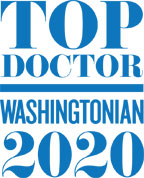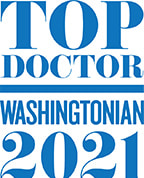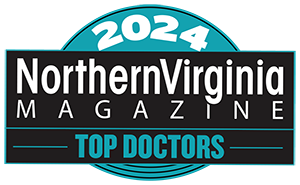Corneal collagen cross-linking is a unique kind of treatment for keratoconus. Patients with keratoconus may rely on special contact lenses that correct the vision problems that the condition causes.
However, measures to correct a keratoconus patient’s vision do not slow or stop the progression of the eye condition. If you have keratoconus, even if you use special contact lenses to improve your vision, your cornea may continue to stretch to the point that even a specially designed contact lens will no longer fit your eye.
In these cases, a corneal transplant is the only way to restore a patient’s vision. But corneal cross-linking is a treatment that can slow down and even stop the cornea from stretching more.
It can’t reverse any damage already done to the cornea, but it can stop keratoconus from getting worse and potentially requiring a transplant. Keep reading to learn more about keratoconus, how corneal-crosslinking works, and who should have it.
What is Keratoconus?
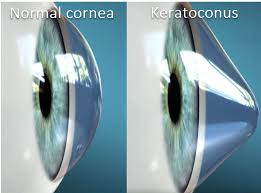
Keratoconus is an eye condition that occurs when the cornea, the clear part of the eye at its front, becomes stretched out. The cornea becomes thinner as it stretches out and begins to bulge in a cone-like shape, lending to the name of the eye condition.
Unlike many eye conditions that primarily affect older patients, keratoconus is most common in patients between 10 and 25 years old. As the cornea continues stretching out, it becomes harder to see as the light that passes through the cornea isn’t refracted properly.
There are similarities to standard refractive errors like nearsightedness or farsightedness, which are caused by the cornea being too short or too elongated. But in the case of keratoconus, the visual problems it causes are more extreme and more challenging to correct.
One of the best ways to correct keratoconus is with special contact lenses called scleral contact lenses. Scleral contact lenses are made to fit over the cone-like shape of the eye.
However, if the cornea becomes too stretched out, even scleral lenses will no longer fit over it. The best way to prevent this from happening or needing a cornea transplant is through corneal cross-linking.
Corneal Cross-Linking
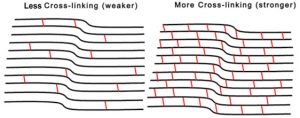
Corneal cross-linking is a minimally invasive procedure that strengthens the cornea, preventing it from stretching out more. The goal of treatment is to prevent further extension of the cornea.
Doing this helps the patient’s eyes not become too cone-shaped for scleral lenses. It also helps stop the progression of keratoconus.
This is done by creating more bonds between collagen fibers in the cornea. Creating more bonds between collagen bonds in the cornea is called “cross-linking” them.
The procedure itself uses a combination of riboflavin (vitamin B2) and UV light to achieve this.
What to Expect During the Corneal Cross-Linking Procedure
Corneal cross-linking is an in-office procedure performed at See Clearly Vision. It does not have to be performed at a surgical suite or surgical center.
You’ll receive numbing eye drops to ensure the corneal cross-linking procedure is comfortable and painless. It takes about an hour to complete.
Once the numbing eye drops spread over the surface of your eyes, your eye doctor will gently remove the outer layer of the cornea, called the epithelium.
Removing the epithelium fully exposes the cornea. Next, your eye doctor will apply riboflavin eye drops to the eye.
Then, they will shine a UV light over your eye to activate the riboflavin. Activating the riboflavin prompts the collagen fibers in the cornea to create more bonds between them.
After using the UV light, the corneal cross-linking procedure is complete. Your eye doctor will finish by placing a bandage contact lens in your eye.
The bandage contact lens protects your eye and aids in recovery while the epithelium regrows. Recovery and discomfort after the procedure are minimal.
You will receive antibiotic and anti-inflammatory eye drops to take in the days following your corneal cross-linking procedure. These eye drops help ensure the epithelium heals as it should.
What Does a Good Candidate for Corneal Cross-Linking Look Like?
Corneal cross-linking is a highly beneficial treatment for keratoconus patients. However, it’s not meant for every patient with keratoconus.
Corneal cross-linking is not for patients with severe keratoconus who have corneas that no longer fit into a scleral lens. At that point, a corneal transplant is usually the only recourse.
The ideal candidate for corneal cross-linking includes the following:
- They are a patient with mild keratoconus
- They are between 14 and 40 years old
- There is no corneal scarring
- Keratoconus progression has already started, with steadily worsening symptoms

Corneal cross-linking isn’t necessary for keratoconus patients who don’t show signs of the condition worsening over six months or more. After a corneal cross-linking treatment, you will still need to wear prescription visual aids.
The treatment does not reverse any damage already done to the cornea. Patients have corneal cross-linking mainly to prevent the cornea from bulging out more and to avoid needing a corneal transplant. Corneal cross-linking is preferable to a corneal transplant as it’s far less invasive.
Do you have keratoconus and think that corneal cross-linking could help? Schedule an appointment today at See Clearly Vision in McLean and Arlington, VA, to learn more about corneal cross-linking and to find out if it could be right for you.

